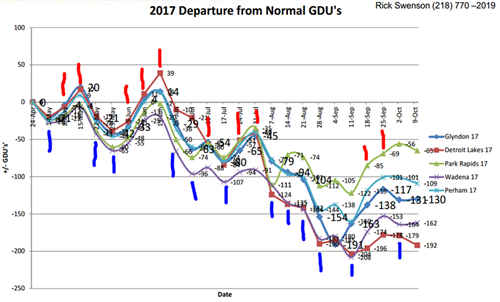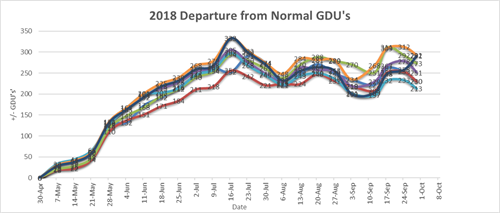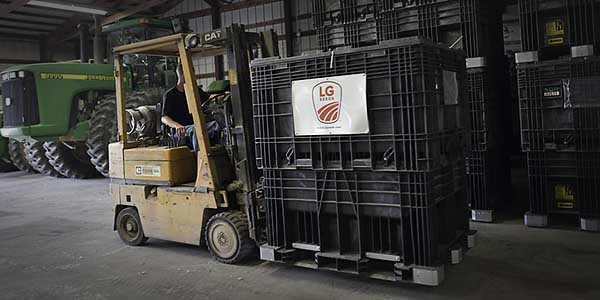AGRONOMICSUPPORT
YOU CAN TAKETO THE FIELD
Importance of Buying Packages of Seed
Every year farmers will sit down and evaluate their yields and how certain corn hybrids and soybean varieties performed. They may even search the internet for plot data for their area. There is a temptation to buy the “hot” hybrid. Although this strategy can payoff in certain years, often it can prove to be a costly mistake.
There are countless factors that go into growing a high yielding crop. These can be broken into two categories-ones that we can control and those we can’t control. The things that we can control include the seed bed preparation, soil moisture levels at planting, fertility, and even seed purchase decisions. The things that we can’t control include the weather and weather-related factors (disease and insect pressures).
Farming is mostly about Return on Investment (ROI) and risk management, two things that the successful producers excel at. One way of mitigating weather risk is by planting a package of hybrids that range in maturities, disease/insect tolerances, and drought/wetness tolerances. This seems so elementary, but I am continually amazed at the number of growers that base their seed purchase decisions solely on what did well this year.
Below, you will see the precipitation during the growing seasons from 2015-2018. Even though the annual totals are consistent (except for 2018), when the rain falls are occurring varies greatly. Even within the month’s rainfall varies because of the increased occurrences of heavy rainfalls followed by dry periods. When these rain events occur has a huge impact on the ultimate success or failure of a crop.



Above are graphs of the overall Growing Degree Units (GDU’s) for 2017 and 2018 for several locations in west central Minnesota. These demonstrate the wide differences that can happen from one year to another. When you consider the conditions needed for disease development and the timing of those conditions, this can tell a lot about what kind of crop we will be harvesting in the fall. Anthracnose stalk rot needs a warm temperatures and wet conditions to thrive, while white mold of soybeans needs slightly cooler temps but wet conditions to survive. In 2017, white mold severely limited soybean yields in central Minnesota. During the month of July, it was typically cooler, but the soybean canopy was wet until late in the afternoon. Conversely, in 2018, we had periods of higher temperatures, but it was still wet (Although not as wet as in 2017). With these conditions, the white mold wasn’t as prevalent as in 2017, but there was more Anthracnose stalk rot in 2018.
These charts may contain data from west central Minnesota; however, the concept remains the same regardless of what crop you are growing or where you are growing it. The best management strategies will always be to “hedge-your-bets” against weather related risks by spreading out the maturities, disease, and drought tolerances among several hybrids. Don’t get me wrong, we still need to be trying the new hybrids and figuring out where they fit into our operations. We just need to purchasing other hybrids to go along with our hot new hybrids. After all, regardless of what some companies may want you to believe, there is no hybrid that will fit every acre and every situation. We may never be able to outsmart Mother Nature, but we can certainly giver her run for her money.
Contact your local Technical Team Agronomist with LG Seeds with questions or more information on LG Seeds hybrids and varieties for respective region.
Download a copy of this technical bulletin here: Importance of Buying Packages of Seed






Technical Team Agronomist